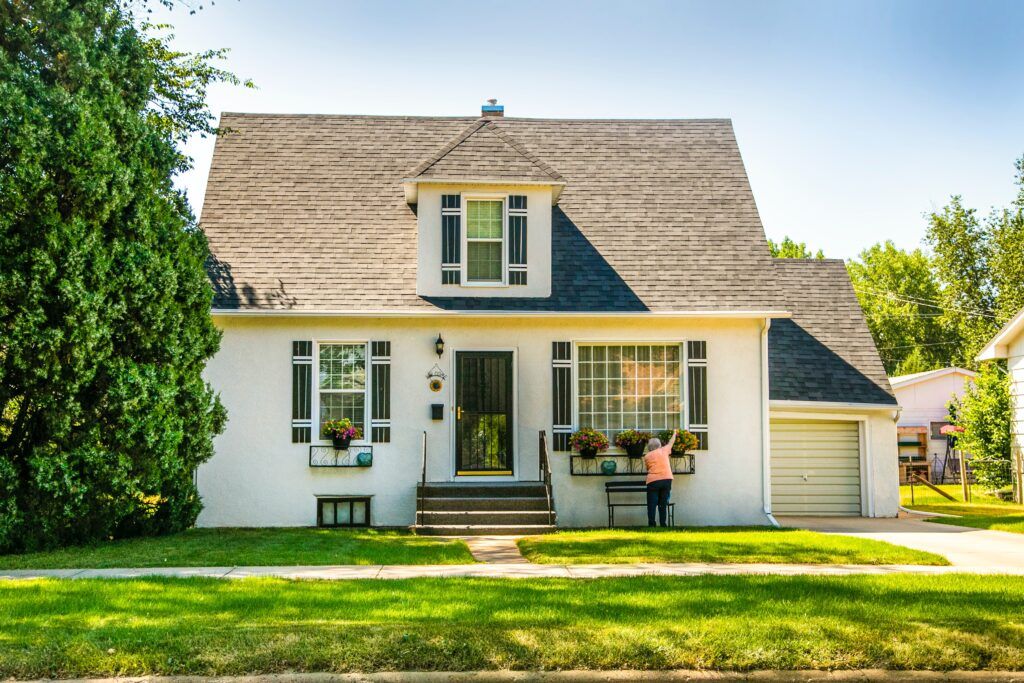8 Week Marketing Plan
The Apprasial

A home appraisal is an unbiased evaluation of your home’s worth. An objective third party will review various factors of your property and assign a value for what it should sell for. Home appraisals can help sellers set competitive prices so their listings generate offers while still turning a profit. On the buyer side, mortgage lenders often require home appraisals before approving loans to confirm it is selling at a fair price.
But what factors contribute to a home appraisal anyway? Is there anything you can do as a homeowner to increase the appraiser’s value estimate? Here are 10 factors that affect a home appraisal so you can show your property in its best light.
Location
The home location is the first thing every home appraiser looks at – and one factor that is completely out of your control. The appraiser will consider the value of homes in the neighborhood as a whole before they ever look at your specific property. A house in a historic district might have a higher value than one in a business district. They will also consider additional factors that can raise or lower your home value. These include:
-
- How close your home is to other properties, the street, and neighborhood amenities like a fire station.
- Whether noise pollution (like a nearby airport or interstate) could create a poor living experience.
- The home’s proximity to schools, parks, and other assets that make it desirable.
- Whether the neighbors add or detract from the living experience. (Overgrown grass, a constantly-barking dog, or rude people can make homeownership a nightmare.)
Two homes of similar size in the same neighborhood could receive different appraisals if one is located right next to a major highway and the other is tucked into a quieter area.
Home Size
The next step after considering the location of your home is its size. The appraiser will consider the home’s square footage, bedrooms, and bathrooms available to potential buyers. These professionals have formulas that assign valuations based on these concrete numbers. Unless you recently added a bathroom or built an extension on your house, this part of the home appraisal is also out of your control.
The construction materials of your house can also affect its appraised value. Consider the structure of a house in a hurricane-prone area like Florida. Appraisers often favor homes made of cement blocks over wooden frames because they are meant to withstand hurricane-force winds. These homes are less of a liability for buyers and lenders, thus increasing their value.
While you can’t completely rebuild your home, you can take steps to increase the value of your property by investing in modern materials. Consider your roof. If your home is in need of a roof replacement, you can increase the perceived value by replacing basic asphalt shingles with heartier slate shingles or metal roofing.
Evaluate how different structural changes affect your home value. For example, a brand-new roof that costs around $7,500 has the potential to increase your home’s value by more than $8,000. You can make your home more sellable and get more money in the sale.
Comparable Properties in the Local Market
The current housing market in your area can affect how an appraiser values your home. They will look at homes nearby that sold in recent conditions to get an idea of what your home is worth. For example, if you and your next-door neighbor have twin houses and their home recently sold for $350,000 then it’s likely that your house will be valued at a similar rate.
This sales comparison of the surrounding area also shows that you can’t trust a dated home appraisal. If you received a home appraisal a year ago, its valuation might be irrelevant based on the current market. Your home value will increase or decrease every few months (especially in a volatile market). You may need to get a fresh appraisal if a lender requires one.
Curb Appeal
Some of the most surprising factors that can affect a home appraisal can be found in the small details of a home. Your curb appeal comprises your driveway, house exterior, and any plants (trees, bushes, and flowers) that grow in your yard. First impressions are incredibly important – even for an objective home appraisal. If the first thing your home appraiser notices is a worn-out home with an overgrown yard, they might devalue your property.
Spend some time improving your home’s exterior to prepare for the appraisal process. Pressure wash your home and driveway. Make repairs to driveway cracks and damaged areas of the house. Prune, plant, and improve the plants in your yard. Whether you live in a suburban neighborhood or an urban townhouse, curb appeal matters.

Storage Space
There’s good news for fashionistas who are proud of their walk-in closets and shoe displays: storage is almost always considered an asset with it comes to the home appraisal process. People from all walks of life want extra closet space, whether the future homeowner needs storage for holiday decorations or their kids’ toys.
If you are planning to sell your house, now is the time to declutter. Donate or throw away the items you no longer need. Organize your closets, which will make them look bigger. The more storage you have and the bigger the closets, the better your home appraisal should be.
Foul Odors and Mess
Does cleanliness affect a home appraisal? It shouldn’t unless the home appraiser finds that the condition of the home can negatively impact the sale or value of the property.
For example, a messy house that has dishes in the sink and clothes on the floor shouldn’t affect the appraised value. However, if the house is dirty to the point where odors permeate throughout each room and the carpet is so dirty it needs to be replaced, then the value will go down. The smell of cigarette smoke alone can lower the final value of a house by up to 30 percent.
Odors and stains can also serve as warning signs that something is wrong with the house. Water stains could point to leaks in the roof or broken pipes. Musty odors could make the appraiser worried about mold. Signs of insects or rodents could alert the appraiser to an infestation or termite damage.
Before the appraiser arrives, consider hiring a professional cleaning company. They will work to remove odors and make your home shine like new. That way you won’t let a messy house affect your appraised value.
Over Personalization
Small touches can make your house more comfortable for you and your family – but too much personalization could negatively affect your market value. For example, a pool can increase the value of your home. Choosing a pool shape that matches your company logo can reduce it. The shape is so niche that most buyers won’t understand why the pool looks at way.
If you have specific uses for rooms in the house, try to modify them ahead of the home appraisal. You want to make your property seem generic enough to appeal to the average buyer.
This is where staging comes in. If you have a house that has four bedrooms and two of them are used as home offices, you might want to stage them to look like bedrooms ahead of the appraisal. After all, too few bedrooms can deter families from looking at your house because they need to accommodate their kids.
Even if your home is in good condition, your appliances could affect the home appraisal. Few homeowners could last more than a day or two without a functioning hot water heater. If yours is dated and about to break, it can hurt your appraisal value.
Other appliances like your washer and dryer, refrigerator, air conditioning system, and stove can all impact your home appraisal. This is particularly true if your home was designed to feature these appliances – like a large kitchen with luxury, commercial-style units for aspiring chefs.
You might be able to get a better home appraisal by investing in new appliances before your list your house.
Heating and Air
Depending on where you live, air conditioning is either a requirement to live or a bonus of buying your house. Buyers will expect your house to have a working air conditioning system if you live in traditionally hot states like Arizona, Florida, Texas, and Nevada. While AC units are less common in states like New Hampshire, Oregon, and Washington, recent heat waves are pushing more homeowners to install these units.
Your home appraisal will vary depending on whether you have central heating and air or rely on window units. The age and design of the system can also impact your results. Consider installing or upgrading your system ahead of a home appraisal to maximize your property values.
One That Shouldn’t: Race and Ethnicity
While home appraisers are meant to be objective in their evaluation of the property, studies show that appraisers often devalue homes that are owned by black and Latino families. One family in Baltimore shared their experience where an appraiser initially valued their home at $472,000. The family removed all of their photos from the home and asked a white colleague to show the house. The new home’s appraisal was $750,000.
This experience in Baltimore isn’t unique. Lender Freddie Mac launched an official study to review racial bias in home appraisals. It found that appraisers’ views of houses are more likely to fall below the contract price if they are located in predominantly black or Latino census tracks.
Low appraisals can lead to denials of home loans for buyers and lower profit margins for sellers. They can also devalue entire neighborhoods because appraisers look at comparable home prices.
As a homeowner, you have spent countless hours improving your house and making it a great place to live. A home appraisal can be a tense experience because you want to see if others objectively value your home at the same level you do. However, many of the factors are out of your control – no matter how many candles you light and cookies you bake.

Certified Probate & Trust Specialist
As a Certified Probate & Trust Specialist you can rest assured that as a Real estate professional, I have the understanding of the Probate transaction and can represent sellers or buyers in probate transactions, as well as investors looking to purchase probate properties.

-
Consultation
- 760-550-7700
- Open 24/7
© 2025 All Rights Reserved.





